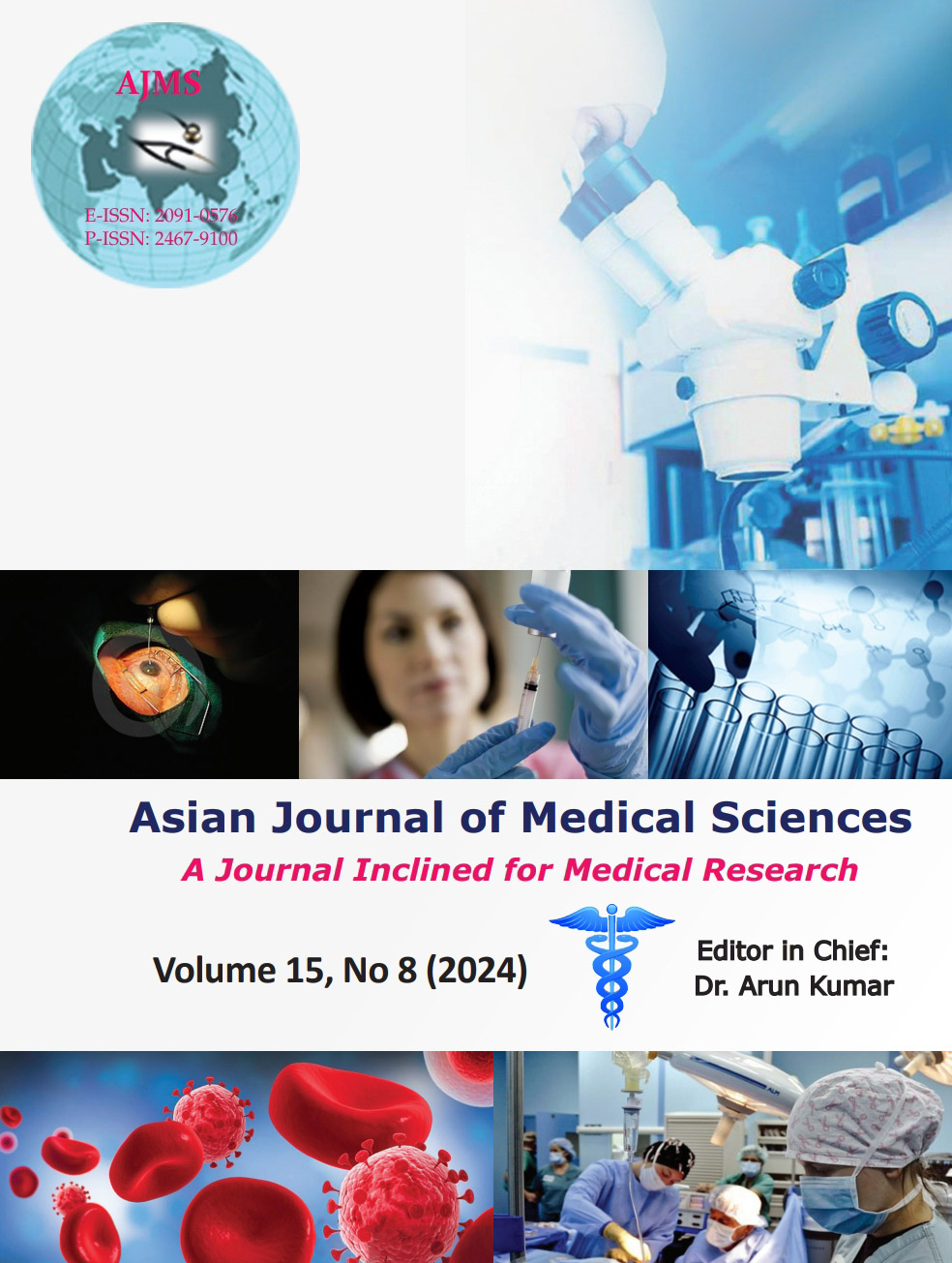The clinical, hematological, and biochemical profiles of patients with complications due to Plasmodium vivax malaria: A case series
Keywords:
Malaria; Plasmodium vivax; Pancytopenia; HyponatremiaAbstract
Malaria, a protozoal infection caused by the six species of the genus Plasmodium, is one of the most important diseases known to humankind, with most infections caused by either of the two species – Plasmodium vivax and Plasmodium falciparum. Previously, it was held that falciparum malaria was responsible for causing severe, life-threatening disease, with vivax malaria causing mild or uncomplicated infections. In this case series, the clinical, hematological, and biochemical profiles of eight patients with features of complications due to P. vivax malaria, along with their clinical course, response to treatment, and clinical outcomes have been described. Among these, the most common clinical features were fever, headache, and myalgias. Five patients had altered mental status, two were prostrated, two were hypotensive, and one had recurrent generalized seizures. Three patients had pancytopenia, two had both anemia and thrombocytopenia, and one had evidence of disseminated intravascular coagulation. Six patients had clinical jaundice, four had elevated transaminases, and four had acute kidney injury. All cases showed excellent response to anti-malarial therapy. Hence, this case series revealed that P. vivax is capable of causing severe, life-threatening organ dysfunction akin to those seen in P. falciparum malaria and that early diagnosis and treatment initiation are associated with positive patient end outcomes.
Downloads
Downloads
Published
How to Cite
Issue
Section
License
Copyright (c) 2024 Asian Journal of Medical Sciences

This work is licensed under a Creative Commons Attribution-NonCommercial 4.0 International License.
Authors who publish with this journal agree to the following terms:
- The journal holds copyright and publishes the work under a Creative Commons CC-BY-NC license that permits use, distribution and reprduction in any medium, provided the original work is properly cited and is not used for commercial purposes. The journal should be recognised as the original publisher of this work.
- Authors are able to enter into separate, additional contractual arrangements for the non-exclusive distribution of the journal's published version of the work (e.g., post it to an institutional repository or publish it in a book), with an acknowledgement of its initial publication in this journal.
- Authors are permitted and encouraged to post their work online (e.g., in institutional repositories or on their website) prior to and during the submission process, as it can lead to productive exchanges, as well as earlier and greater citation of published work (See The Effect of Open Access).




